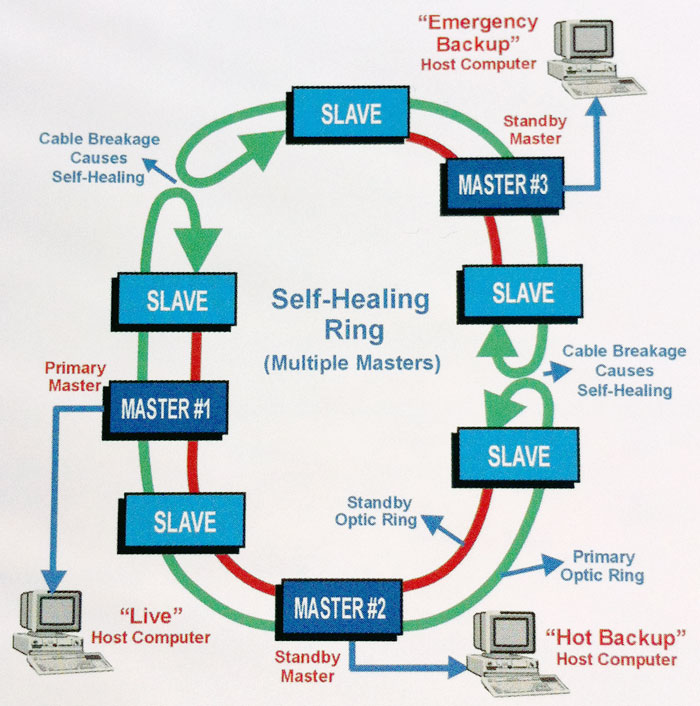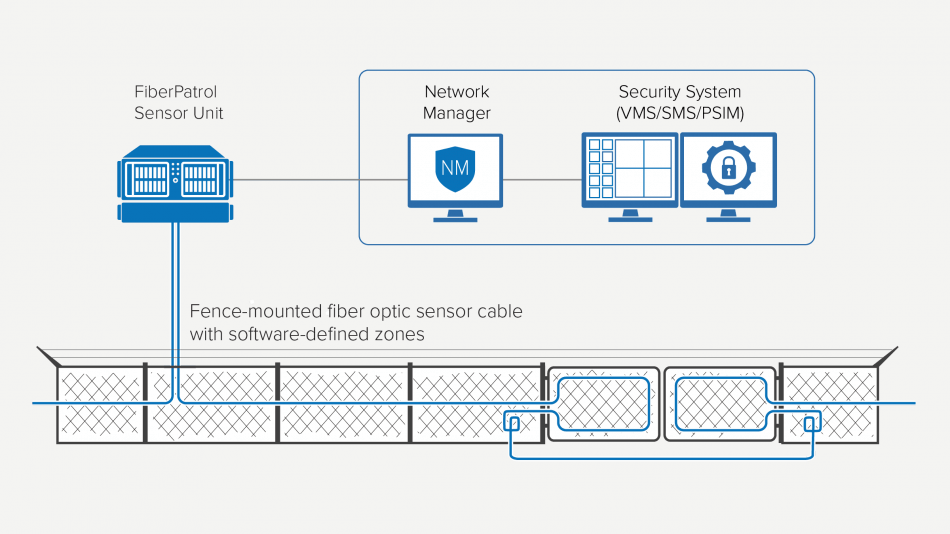Enhance Your Safety With Advanced Fiber Optic Protection Systems
In an era where protection is vital, innovative fiber optic protection systems offer a compelling remedy for enhancing security throughout various atmospheres. What ramifications do these improvements hold for future safety actions?
Benefits of Fiber Optic Security
Harnessing the benefits of fiber optic technology significantly improves safety and security systems across various applications. One of the primary benefits is the increased bandwidth ability, enabling the transmission of big quantities of data at broadband. This is specifically crucial for real-time video surveillance, where high-resolution feeds can be sent out without latency, guaranteeing prompt reaction capabilities.
Additionally, optical fiber exhibit superior resistance to electromagnetic disturbance, which is important in environments with possible signal disruptions. This dependability guarantees constant efficiency in vital safety and security operations. Moreover, fiber optic cable televisions are much less vulnerable to tapping and unapproved accessibility contrasted to standard copper wiring, consequently boosting information integrity and discretion.
Another noteworthy advantage is the sturdiness of fiber optic systems; they are more resistant to ecological variables such as wetness, temperature level fluctuations, and corrosive materials. This resilience equates to lower upkeep costs and longer life expectancies for safety and security installations.
Finally, the light-weight nature of fiber optic cords assists in less complicated installation and directing, particularly in intricate infrastructures (fiber optic security system). Eventually, the combination of fiber optic technology into safety systems not only boosts defense actions yet additionally maximizes functional effectiveness
Secret Attributes to Take Into Consideration
When reviewing fiber optic safety systems, a number of crucial features have to be taken into consideration to ensure optimal performance and efficiency. First, evaluate the system's detection variety and sensitivity; an extensive variety enables monitoring large locations, while high level of sensitivity guarantees that even minor disruptions are discovered immediately.
Following, think about the assimilation abilities of the system. A fiber optic safety and security system ought to seamlessly user interface with existing safety steps such as video cameras and alarms, creating a natural protection network.
Toughness and environmental resistance are additionally important functions. Make certain that the system is developed to withstand extreme weather and possible physical risks, as this will lengthen its operational lifespan.

Finally, consider the scalability of the system. A robust fiber optic security system need to be quickly expanding to accommodate future demands without significant overhauls. By carefully taking into consideration these functions, you can choose a fiber optic safety solution that my site improves safety and safety and security in your setting.
Setup Refine Summary
To efficiently execute a fiber optic protection system, a find methodical installment process is crucial. This procedure starts with an extensive site evaluation to establish the specific protection needs and to recognize ideal areas for fiber optic cords and safety gadgets. Following this assessment, the installation group will certainly develop a comprehensive strategy, consisting of cable pathways, needed tools, and compliance with regional regulations.
Following, the installment entails laying the fiber optic cables, ensuring they are secured from ecological factors and physical damage. Proper handling methods are critical, as fiber optic cables are sensitive and can be conveniently harmed. After the cabling is installed, adapters and discontinuations are meticulously completed to guarantee signal integrity.
The succeeding phase contains mounting safety devices such as video cameras, motion detectors, and security system, all incorporated with the fiber optic network. Extensive screening is conducted to verify that all parts are operating appropriately and to guarantee optimum efficiency.

Contrasting Fiber Optic to Standard Solutions
The development of safety and security technology has actually brought about substantial innovations in the comparison between fiber optic systems and typical copper-based systems. Fiber optic systems make use of light to transfer data, supplying remarkable data transfer and speed compared to their copper counterparts. This causes improved data transmission capabilities, making fiber optics excellent for high-resolution video surveillance and real-time monitoring.
In addition, fiber optic cable televisions are immune to electro-magnetic disturbance, decreasing the likelihood of signal deterioration brought on by external variables. This characteristic makes certain image source regular efficiency, even in tough settings. In contrast, typical copper systems are much more susceptible to interference, resulting in potential susceptabilities in safety and security applications.
Sturdiness is one more advantage of fiber optic systems. They are less susceptible to damage from environmental aspects such as moisture and temperature level variations, which can endanger copper wiring. Fiber optics are lighter and thinner, permitting for less complicated installation and decreased physical impact.
Nevertheless, conventional systems have a tendency to have reduced initial prices, making them eye-catching for budget-conscious tasks. While fiber optic systems may need a greater in advance financial investment, their lasting benefits-- such as reduced upkeep prices and better reliability-- usually exceed the first expenditure, positioning them as a remarkable choice for contemporary safety demands.
Future Patterns in Security Innovation
Emerging patterns in safety and security technology are poised to transform the landscape of monitoring and hazard detection - fiber optic security system. As organizations progressively deal with advanced dangers, developments such as man-made intelligence (AI) and device learning (ML) are ending up being important to safety systems. These innovations enhance the ability of fiber optic systems by allowing real-time data analysis, determining abnormalities, and automating feedbacks to possible breaches
In addition, the integration of the Internet of Points (IoT) is changing security frameworks. IoT devices can provide thorough situational awareness and assist in seamless communication in between various safety and security components. This interconnectedness permits extra effective tracking and faster occurrence reaction times.
Biometric verification is likewise getting momentum, providing a higher level of safety through distinct physical features. As this modern technology advances, it is most likely to be included into fiber optic systems for improved accessibility control.
Final Thought
To conclude, progressed fiber optic protection systems stand for a significant innovation in safety and security and security modern technology. Their remarkable bandwidth, resistance to disturbance, and durability help with dependable monitoring and data stability. As these systems incorporate AI and IoT capacities, they improve the total security structure, guaranteeing durable defense for assets. The change from standard systems to fiber optic remedies shows an expanding fad towards a lot more efficient and effective security actions in an increasingly complicated technical landscape.